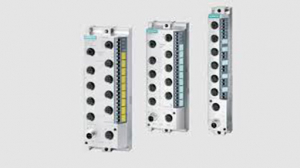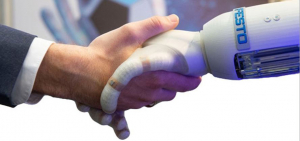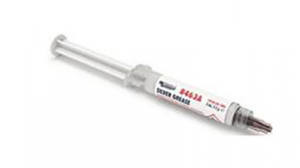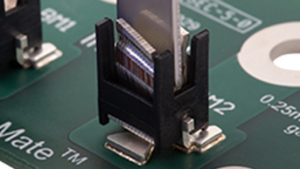Uninterruptile power is available from AECUK
5th January 2009
Source:
BORRI Ltd
It is important to realise that power is neither clean nor uninterruptible. With many companies now putting all their eggs in one electronic basket, a power supply is a critical factor in business life and has been identified as a major problem for all companies.
The first step in providing power protection is to understand the leading causes of power-related problems. A myth to dispel is that power is perfect. Blackouts, brownouts, spikes and surges can cause a loss of data in computer systems and other critical equipment. The modern On Line Uninterruptible Power Supply (UPS) acts as a buffer and provides clean, reliable power to vulnerable electronic equipment and is designed to protect it from all possible problems that may occur in the power grid.
Even a momentary disruption can have a devastating effect on power sensitive equipment especially in IT based businesses such as internet service providers, data centres, wireless telecommunication networks, on-line traders, computer chip manufacturers, hospitals, call centres - in fact any business that stores important information on a computer or file server. Which, lets face it, covers most companies in this country and across the world. Not only will power outages result in data corruption for such firms but could also result in burned circuit boards, component damage, file corruption and worst of all the loss of customer confidence.
Without doubt the installation of a UPS is nowadays accepted as being a vital element in the protection of sensitive equipment. It has two important functions. First of all it takes a power supply and cleans it of spikes and brown outs. Secondly, it provides a backup power source in the event of a power outage, thereby protecting electrical equipment such as servers, telephone systems and other critical applications.
Here are a few important facts and figures about power outages:
Ø Power Failure is responsible for 28% of computer system breakdowns
Ø Over one third of companies take more than a day to recover from the disruption caused by a power failure. 10% take more than a week
Ø Because of a power failure, 33% of companies lose between £10 000 and £250 000, 20% lose between £250000 and £1 million, 15% lose over £1 million
Ø Out of 450 leading companies surveyed, each suffered an average of 9 computer failures each year. (Source: Find FVP/Fortune 1000 companies)
Ø Following a power failure it can take up to 48 hours to reconfigure a network system or a multi terminal
Ø It can take days, weeks or even months to re-input lost data. Sometimes data is lost forever, for instance in CAD or graphics applications where original work can never be recreated
Ø Insurance claims take a long time to settle - well after the disaster has occurred
Ø 90% of all companies that experience a computer disaster and don't have a survival plan go out of business within 18 months (Source: Price Waterhouse)
There are three different types of UPS all suitable for different tasks, and supporting different types of load. The off-line UPS is the lowest cost, providing basic battery backup and surge protection. When the input voltage fails or fluctuates outside of a pre-set tolerance window, the UPS detects this and a relay will close, allowing the UPS to start feeding battery power via the inverter. The inverter is then switched on and either a square, step or sinewave form output is supplied. Upon the return of mains power, the output is switched back onto mains and the inverter is turned off. Typically there will be a break of between 4-10 ms during the transfer to and from the battery mode.
The line-interactive UPS has the same basic surge protection and battery backup as an off-line device, with the advantage of better filtering and output voltage boost/reduce features. Whilst not entirely eliminating mains-borne interference, line-interactive technologies reduce the impact of spikes, surges and sags by ‘clipping’ the peaks and valleys, boosting power or switching to battery back up. As with offline UPS, typically there will be a break on the transfer to and from battery mode, though usually this will be shorter than with an offline UPS.
A UPS using true online double conversion technology provides the highest level of power protection available. The UPS converts the 230V input AC mains supply to DC power, which is then used to charge the battery. The DC current flow is then fed through an inverter stage, which reconstructs the 230V AC mains output. Because the AC output is completely regenerated, it will be completely free from any mains-borne interference such as spikes and voltage variations. The output voltage and frequency is controlled precisely, thus ensuring a clean and stable sinewave power output.
Online UPS are able to withstand large fluctuations on the input voltage before transferring to battery power (typically 276V-184V) thus eliminating unnecessary battery discharges. Upon mains failure, transfer to battery power is seamless – no break. Online UPS also have various failsafe and self-diagnostic features that will instantly transfer the load onto mains power if there is a failure within the UPS hardware, or if the UPS is overloaded.
In September the National Grid issued figures that suggested the country could be crippled by energy shortages this winter because there is so little spare capacity. The loss of only one of our 38 biggest power stations at times of high demand could lead to breaks in supply affecting both businesses and homes. These potential blackouts do not take account of other dramatic incidents that might occur such as explosions, fires, floods and landslides as well as other more mundane mishaps such as diggers cutting through cables.
Even a momentary disruption can have a devastating effect on power sensitive equipment especially in IT based businesses such as internet service providers, data centres, wireless telecommunication networks, on-line traders, computer chip manufacturers, hospitals, call centres - in fact any business that stores important information on a computer or file server. Which, lets face it, covers most companies in this country and across the world. Not only will power outages result in data corruption for such firms but could also result in burned circuit boards, component damage, file corruption and worst of all the loss of customer confidence.
Without doubt the installation of a UPS is nowadays accepted as being a vital element in the protection of sensitive equipment. It has two important functions. First of all it takes a power supply and cleans it of spikes and brown outs. Secondly, it provides a backup power source in the event of a power outage, thereby protecting electrical equipment such as servers, telephone systems and other critical applications.
Here are a few important facts and figures about power outages:
Ø Power Failure is responsible for 28% of computer system breakdowns
Ø Over one third of companies take more than a day to recover from the disruption caused by a power failure. 10% take more than a week
Ø Because of a power failure, 33% of companies lose between £10 000 and £250 000, 20% lose between £250000 and £1 million, 15% lose over £1 million
Ø Out of 450 leading companies surveyed, each suffered an average of 9 computer failures each year. (Source: Find FVP/Fortune 1000 companies)
Ø Following a power failure it can take up to 48 hours to reconfigure a network system or a multi terminal
Ø It can take days, weeks or even months to re-input lost data. Sometimes data is lost forever, for instance in CAD or graphics applications where original work can never be recreated
Ø Insurance claims take a long time to settle - well after the disaster has occurred
Ø 90% of all companies that experience a computer disaster and don't have a survival plan go out of business within 18 months (Source: Price Waterhouse)
There are three different types of UPS all suitable for different tasks, and supporting different types of load. The off-line UPS is the lowest cost, providing basic battery backup and surge protection. When the input voltage fails or fluctuates outside of a pre-set tolerance window, the UPS detects this and a relay will close, allowing the UPS to start feeding battery power via the inverter. The inverter is then switched on and either a square, step or sinewave form output is supplied. Upon the return of mains power, the output is switched back onto mains and the inverter is turned off. Typically there will be a break of between 4-10 ms during the transfer to and from the battery mode.
The line-interactive UPS has the same basic surge protection and battery backup as an off-line device, with the advantage of better filtering and output voltage boost/reduce features. Whilst not entirely eliminating mains-borne interference, line-interactive technologies reduce the impact of spikes, surges and sags by ‘clipping’ the peaks and valleys, boosting power or switching to battery back up. As with offline UPS, typically there will be a break on the transfer to and from battery mode, though usually this will be shorter than with an offline UPS.
A UPS using true online double conversion technology provides the highest level of power protection available. The UPS converts the 230V input AC mains supply to DC power, which is then used to charge the battery. The DC current flow is then fed through an inverter stage, which reconstructs the 230V AC mains output. Because the AC output is completely regenerated, it will be completely free from any mains-borne interference such as spikes and voltage variations. The output voltage and frequency is controlled precisely, thus ensuring a clean and stable sinewave power output.
Online UPS are able to withstand large fluctuations on the input voltage before transferring to battery power (typically 276V-184V) thus eliminating unnecessary battery discharges. Upon mains failure, transfer to battery power is seamless – no break. Online UPS also have various failsafe and self-diagnostic features that will instantly transfer the load onto mains power if there is a failure within the UPS hardware, or if the UPS is overloaded.
In September the National Grid issued figures that suggested the country could be crippled by energy shortages this winter because there is so little spare capacity. The loss of only one of our 38 biggest power stations at times of high demand could lead to breaks in supply affecting both businesses and homes. These potential blackouts do not take account of other dramatic incidents that might occur such as explosions, fires, floods and landslides as well as other more mundane mishaps such as diggers cutting through cables.
Similar articles
More from BORRI Ltd
- Borri's Power Solutions To Light Up Data Centre Show 24th November 2011
- BORRI'S NEW SINGLE PHASE COMPACT UPS IS BIG ON POWER MANAGEMENT 22nd July 2011
- BORRI NAME TUCKER AS NEW MD 8th June 2011
- Top Safety Accreditation for Borri Ltd. 11th December 2009












Write a comment
No comments